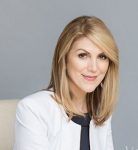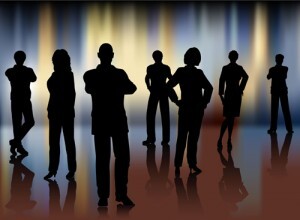
Monday, January 25, 2021 | Business Tips, Communication, Public Speaking, Social Media
There has rarely been a time when clear communication was valued and needed as it is now.
Each of us can help stop the spread of misinformation and disinformation.
1. Check the sources of articles or other pieces of content before sharing them. Consider the outlet and the background and expertise of the author or creator of the content to determine whether or not they are trustworthy sources.
2. Avoid sharing snippets or quotes that remove the context of someone’s words.
There are many more in-depth articles about how to evaluate the factual accuracy of various news media outlets and how to evaluate information. Here are two articles you might find helpful:
To download our free Media Interview Guide and other tools, click here.
To check out our online courses, click here.
For a complimentary consultation to discuss private training for yourself or your team, click here.

This post was written by Lisa Elia, a media trainer, presentation trainer, pitch coach, communication expert, and speaker. She trains clients around the world for media interviews, speeches, internal and external presentations, panels, investor presentations, and promotional videos, and provides executive and team communication coaching.
With more than 25 years of experience, Lisa has prepared clients for interviews with TODAY, GMA, The Wall Street Journal, CNN, ESPN, and hundreds of other outlets. Lisa has shared her expertise with national media outlets that include Inc., Entertainment Tonight, E!, and many others. Clients include entrepreneurs, Fortune 500 companies, and everything in between as well as athletes, celebrities, and other public figures.
Thursday, February 14, 2013 | Messaging, Public Speaking, Social Media
What does it mean to have influence?

Influence is not controlling, nor is it pushy.
To have influence with others, you have usually earned it through your experience, integrity, knowledge and willingness to share your wisdom.
When you are influential, you communicate in a way that makes people want to listen to you. This comes through in your body language, your written communication and your speech.
You have influence because you have a sense of maturity about you, and this doesn’t mean you’re any certain age. You could be 20 and still have the maturity to lead others.
To influence others, you show others that you’re enjoying your life. People want what you’re having.
You have the ability to get things done, and this is why people listen to you.
You are focused and on a mission to create the life you want and to help others create the lives they want.
You know that to make great changes, you want to reach more people with your message and your creations.
My challenge to you is this: list 3 things you can do over the next 3 days to increase your influence.
Here are some ideas:
1. Share more tips and/or inspirational thoughts on social media.
2. Look for new groups to join on social media and join the conversation.
3. Think of 5 new important messages you want to share.
4. Add a press room and/or speaking room to your website.
5. Offer to speak at a gathering where people need your information or would want to learn about your product.
6. Look at HARO leads and submit yourself to be considered for media interviews with some of the journalists and TV and radio producers who have posted queries.
7. Create some videos in which you share tips or product information and post them on several video distribution sites, your social media networks and your website.
Please feel free to share what you intend to do, or come back in a few days and share what you’ve done, to have greater influence.
For more tips on how to increase influence by sharing your message, creating an online press room and more, read these blog posts:
Authenticity and Your Message – a Note from a Media Trainer
https://expertmediatraining.com/authenticity-message-from-media-trainer
Media Training Tips on The Language of Your Brand in Media Interviews
https://expertmediatraining.com/brand-language-media-training-tips
How to Create an Online Press Room That the Media Will Love, from a Los Angeles Media Trainer
https://expertmediatraining.com/online-press-room-tips-from-media-trainer/
Social Media Tips to Create Relationships with the Press
https://expertmediatraining.com/social-media-tips-from-media-trainer/
Wednesday, August 29, 2012 | Business Tips, Messaging, Social Media
Eric Clapton sang, “It’s in the way that you use it.” While this applies to many things, it certainly applies to what you do with press placements.
 One of the best things about getting press coverage is that you can use it to help your business in a multitude of ways. Certainly, good press placements can help new clients and buyers find you, so you can experience an immediate burst in sales. However, there’s so much more that you can do to maximize every placement you get.
One of the best things about getting press coverage is that you can use it to help your business in a multitude of ways. Certainly, good press placements can help new clients and buyers find you, so you can experience an immediate burst in sales. However, there’s so much more that you can do to maximize every placement you get.
Being featured in respected media outlets raises your esteem in the eyes of most people because they know that most reputable TV shows, radio shows, newspapers, magazines and web sites will conduct some research before interviewing someone. So, if you’re featured as an expert or your product is selected for inclusion in a magazine, you’re getting a third-party endorsement from the media, who are thought to be “in the know.”
To learn how to use press placements, once you get them, read on.
Ten Great Things To Do with Press Placements
1. Post a scan of the print article or a video or audio clip in your online press room. If you don’t have an online press room yet, I highly recommend creating one, especially if you want more press.
2. You can also post impressive press clippings on the home page of your web site so anyone who visits your site can see them.
3. Share links to them with your sales team or use it for your own sales calls. If you take care of sales yourself, send links to great press placements to potential clients and existing clients who can benefit from the information or who will enjoy seeing you or your products featured in the media.
4. If you sell products and you have a sales team or sales reps, share your press clippings with them immediately so they can present them to potential clients who may want to buy more of your product to meet the anticipated increased demand it due to the media exposure. You can also make them aware of upcoming media coverage so they can prepare for increased demand for your product by purchasing more of your product.
5. Engage people you email by sharing a link to the article or broadcast clip that you host on your web site in the signature of your e-mail. Be sure to tell people why they should click on the link (e.g., “Click here to read what the NY Times said about us.”)

6. Use your press to get more press. Use your press placements as fuel for other articles and interviews by including links to articles and appearances in emails you send to pitch the media. Just be sure to NOT pitch a similar idea that’s covered in the piece you’re sharing with a competitive outlet. They really don’t like that.
7. Get your social media friends excited about your good news. In addition to you sharing links to your press clippings on Facebook, Twitter, LinkedIn and other social media, ask friends to tweet and share on Facebook about your press placements.
8. Include press clippings and TV and radio segment clips in sponsorship packages, if you’re seeking sponsors. Companies who are considering spending their marketing dollars on you will want to see that you’re highly visible and that you’re media savvy enough to garner press coverage (or have a PR rep who is) so you can potentially get press coverage for them, if they sponsor you.
9. If you’re a public speaker and you’re trying to attract more speaking engagements, post your clippings on your web page/area devoted to you as a speaker. This will raise your credibility greatly and it will impress people who are considering booking you to speak at their events.
10. Display copies of your press clippings at events where you’re hosting a table. Here’s a great way one of our clients, photographer Kerry Kara, used her press clippings. She took the double-page spread of her photos that we had secured for her in Modern Bride and had it blown up and mounted on display boards to grace her table at a bridal show. The display attracted people to the booth and helped her book thousands of dollars in business.
Press placements are an asset. Use them to your greatest advantage with this list of 10 things to do with press placements.
Now that you know how to use press placements, once you get them, do you need additional media training resources and tips?
If so, visit these links on our site:
Videos with Tips to Improve Communication, Presentations, Speeches and Media Interviews:
https://expertmediatraining.com/videos-media-interviews-presentations-speeches-investor-pitches
Frequently Asked Questions about Media Training
https://expertmediatraining.com/faqs-about-media-training/
Media Training Tips for Actors, Music Artists and Performers
https://expertmediatraining.com/media-training-for-actors-music-artists-and-performers-media-interview-tips/
Media Interview Checklist from a Los Angeles Media Trainer
https://expertmediatraining.com/media-interview-checklist-from-a-media-trainer/
How to Create an Online Press Room That the Media Will Love
https://expertmediatraining.com/online-press-room-tips-from-media-trainer/
Prepare for TV Interviews BEFORE You Book One – Tips from an LA Media Trainer and Spokesperson
https://expertmediatraining.com/prepare-for-tv-interviews-media-trainer-tips/
Save
Wednesday, July 11, 2012 | Media Training, Messaging, Social Media

Authenticity and honesty are integral to creating a strong business and brand. However, this does not mean you must divulge everything about your business, nor should you.
During economic downturns, I’ve heard business owners and entrepreneurs complain about how hard it is and how tough business had become. While people need to vent and express themselves, it’s important to consider several things before you open your mouth or hit your keyboard.
Ask yourself these questions before you speak negatively:
• What is the purpose of this communication?
• Is this conversation going to help me propel my business forward?
• Will complaining about what I believe is my current state of being help me?
• Will this behavior attract or repel potential clients or referral sources?
• Is there a more proactive way I can express my desire for more business and possibly elicit help, ideas or referrals?
Some proactive communications strategies you might consider:
Communication tip #1: Survey clients or potential clients about what they need or want most. In addition to providing you with insight about products and services your clients and potential clients are seeking, this will get your clients interacting with you and your brand and could remind them you’re there and may even result in sales.
Communication tip #2: Let people know that you “have room for” more clients or business. This does not sound desperate, especially if you avoid the word “need.” Even busy, successful people let others know when they have room for more clients or business, which is why they’re busy and successful.
Communication tip #3: Tell people of other opportunities you’re seeking, such as speaking engagements or ad trade opportunities.
 Communication tip #4: Be creative and approach businesses that provide products and services that complement yours with the idea of cross-promoting your products or services.
Communication tip #4: Be creative and approach businesses that provide products and services that complement yours with the idea of cross-promoting your products or services.
Communication tip #5: If you have extra time on your hands, use it to promote yourself or your company. Use this time to write articles, pitch ideas to the media or put together a talk that you could present to a group of business people or others you’d like to reach.
Communication tip #6: Ask what you can do to help others promote their business. An introduction you make could help someone bring in more business, and most of us have learned, what goes around comes around. Plus, it feels good to help people grow their businesses.
A few communication tips to remember:
Be positive. People are more likely to get involved with a hopeful cause than a hopeless one. Be as positive as you can be. If you begin to use more positive words, you can even change your mind and your mood.
Don’t say it if you wouldn’t want it etched in stone. Consider that everything you write on your website, blog, Twitter or Facebook can live on forever. The same goes for e-mails and even phone conversations. As Oprah says, “I don’t write anything in an e-mail that I wouldn’t want to see in the New York Times.” It’s a good rule to follow.
Choose your confidantes wisely. If you really feel the need to share negative feelings or fears, do so with a few trusted friends or colleagues. This doesn’t mean you’re being false with everyone else; it just means you’re doing what’s best for your business. If you present yourself and your business as something that is vital and evolving, clients will be more excited to work with you and referral sources will be more enthusiastic about referring business to you.
Words have power. Use them to your advantage.
Now that you have a few communication tips, would you like some additional media training resources and tips?
If so, visit these links on our site:
10 Things to Do to Become a Trusted Expert and Thought Leader, Tips from a Media Trainer and PR Expert
What is Influence and How Do You Increase It? Tips from a Media Trainer




 One of the best things about getting press coverage is that you can use it to help your business in a multitude of ways. Certainly, good press placements can help new clients and buyers find you, so you can experience an immediate burst in sales. However, there’s so much more that you can do to maximize every placement you get.
One of the best things about getting press coverage is that you can use it to help your business in a multitude of ways. Certainly, good press placements can help new clients and buyers find you, so you can experience an immediate burst in sales. However, there’s so much more that you can do to maximize every placement you get.



